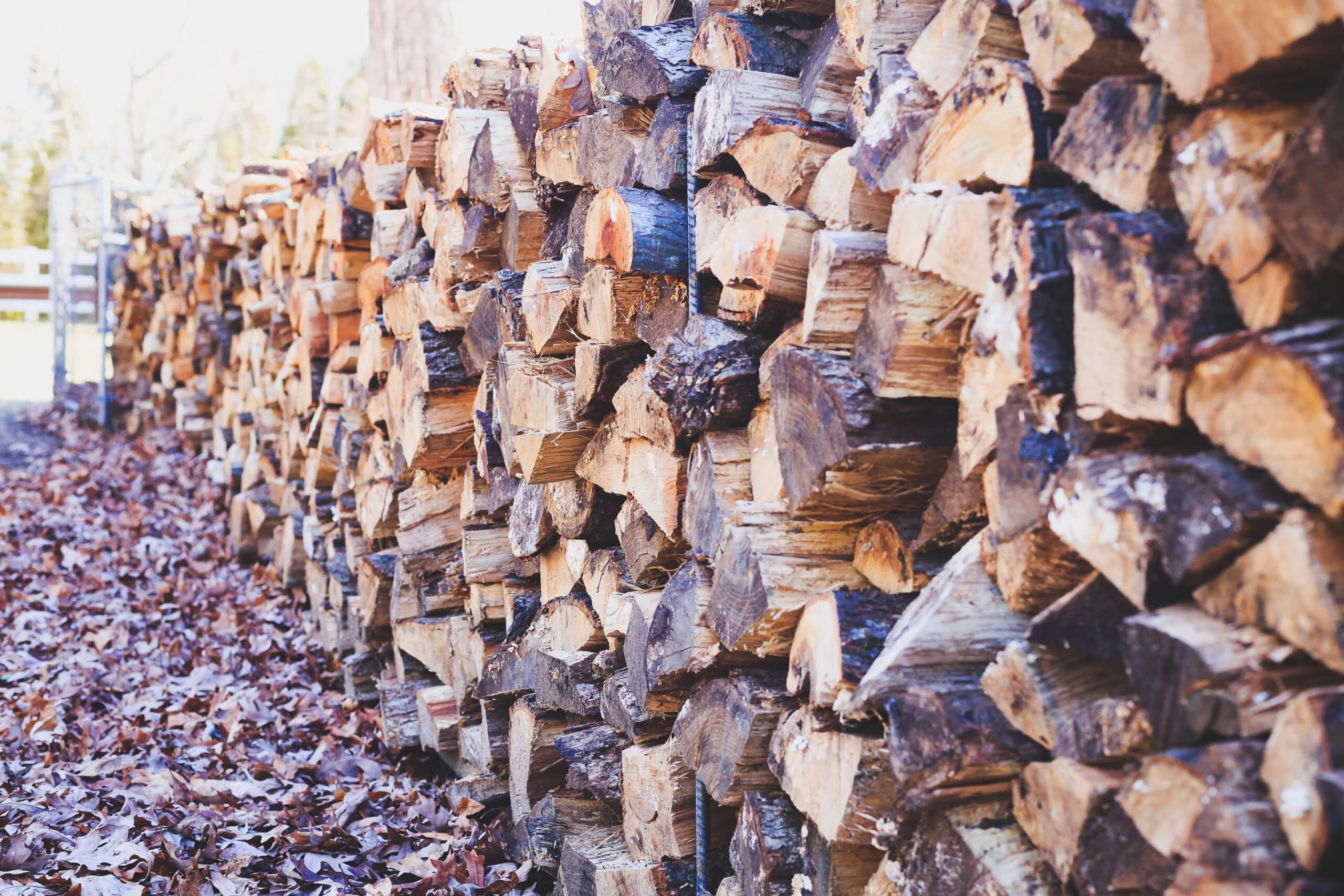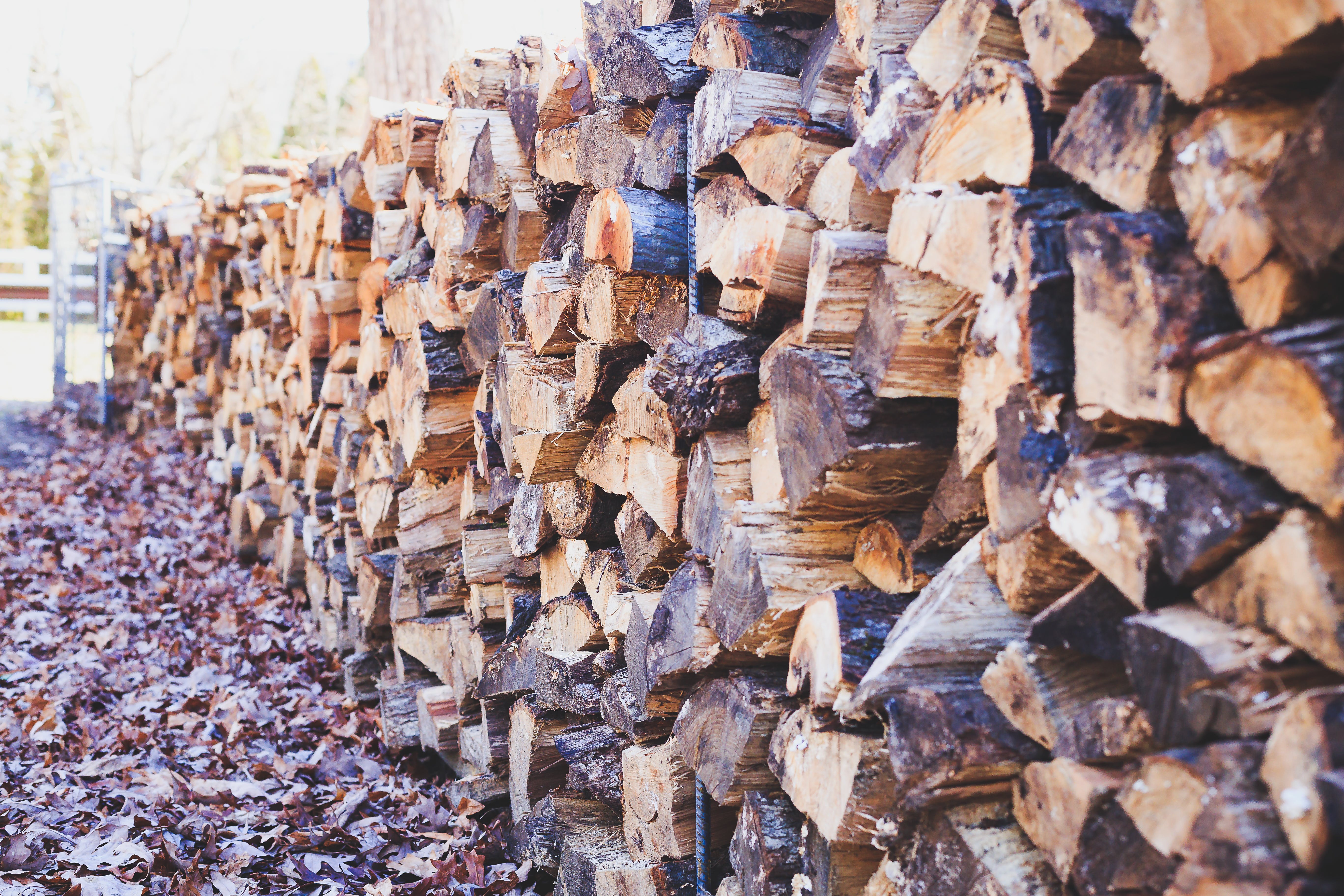
Nothing beats building a roaring bonfire on a crisp winter evening. There is something very nostalgic and comforting about the rich smell of smoke from the wood, the gentle crackle of the popping embers, and, of course, the delicious taste of freshly roasted marshmallows. Nights like these are truly the stuff that great memories are made of. But does the fun have to be over once the log pile dwindles? It is very tempting to look around for alternative materials to keep the fire burning, but there are some materials that should never be used as fuel in your backyard fire pit. Read on below and we will tell you which materials to avoid and which materials you can burn safely in your SS fire pit in a pinch.

Materials You Should Never Burn in Your Wood-Burning Fire Pit
- Plastic: Plastic is everywhere and has a tendency to collect in our homes. Burning it may seem like a convenient way to get rid of those old containers that have been piling up in your recycling bin. However, when burned, plastic can release a variety of chemical fumes that are toxic to humans. Not only are these fumes harmful for your health, they are also bad for the environment. Plus, melted plastic is difficult to remove and may damage your fire pit in the process. Instead of burning them, find new ways to repurpose your plastic bottles and containers or take them to your local recycling center.
- Treated/Painted Wood: Why is burning treated or painted wood so bad, you might ask? It is wood, after all. This may be true, but treated and painted wood products are covered with a variety of chemicals to prevent the wood from rotting or to color the material. Like plastic, burning these items can release toxic fumes into the air. Depending on how old the wooden item is, it might even contain arsenic. If you are confident that the lumber left over from your latest woodworking project is untreated, go ahead and toss it on the fire, but if there is any doubt whether the wood might have been treated or painted, toss it onto the scrap heap instead.
- Trash: It can be quite tempting to simply get rid of your trash by starting a fire, but burning trash is actually quite dangerous. Not only is burning trash illegal in many areas, burning trash can also release toxic chemicals into the air as well as large amounts of black smoke and a nasty smell. Plus, throwing a bag of trash onto the fire without checking what is inside first can lead to dangerous scenarios if it contains something combustible.
- Cardboard and Paper: At first glance, cardboard and paper may seem fairly safe to burn, but you may not realize that burning them can create huge flakes of smoldering ash and release them into the air. If one of these flakes were to land in the wrong place, it could lead to injuries or potentially light other objects on fire. Brightly colored paper goods, such magazines or wrapping paper, also contain a lot of ink, which can release harmful chemicals into the air when burned. It is better to simply recycle or discard these materials.
- Poison Ivy, Poison Oak, or Sumac: If you spend a lot of time outdoors, you may be all too familiar with these pesky plants. These species contain oils that can cause an irritating rash when they come in contact with your skin. Burning these plants also releases those same oils into the air, which can lead to respiratory problems, lung irritation, and other allergic reactions. If you are unsure of what to look out for when considering burning the local foliage, poisonous plants can be identified by glossy green leaves (typically coming in groups of three), white or yellow berries, or a milky sap substance. Try to avoid any plants that match this description, both in the woods and in your fire pit.
- Accelerants: Products, such as lighter fluid or gasoline, may seem convenient, as they allow you to light up a fire quickly, but using these materials can be extremely dangerous. Accelerants are unpredictable and can cause a fire to quickly flare up beyond your control. Additionally, they can lead to explosions. You are better off starting a fire the old-fashioned way with firewood and kindling. It may take a little extra time and effort, but your work will be rewarded by a safe and pleasantly-scented fire.
- Green or Soft Wood: Unlike the other items on this list, burning green or soft wood is actually not dangerous or damaging to your health. However, it does have a tendency to produce large amounts of smoke that will make it very unpleasant to sit around the fire. It also often does not burn well or evenly and can be difficult to catch or ignite.
Things You Can Burn in Your Backyard Fire Pit Other Than Wood
Now that you know which materials to avoid, there are also several alternatives to wood that you can safely use in your fire pit.
- Wood Bricks: Wood bricks are made from recycled sawdust and woodchips that have been compacted into a brick shape and dried in a kiln. These bricks are easy to store and burn cleanly, making them a great option for roasting marshmallows and hot dogs or other cooking.
- Wood Pellets: Similar to wood bricks, wood pellets are also created from recycled sawdust and are rolled into small pellets. These pellets can also be easily stored in a bag and create less char than firewood. Unless you have a fire pit that is designed to accommodate wood pellets, such as ours, you will need to use a metal basket to store the pellets inside the fire pit as they burn.
- Switchgrass and Soy Logs: Another non-wood option is switchgrass and soy logs. These logs are a 50% blend of soybeans and switchgrass, using natural wax as a binder. These logs are safe to burn and do not leave any residue in your fire pit. Plus, it leaves a sweet scent as it burns.
- Recycled Coffee Grounds: A surprising fuel option for your fire pit is old coffee grounds. Burning these coffee grounds will mix things up by giving your fire a faint coffee scent, as well as help keep materials out of landfills.
Whether you choose traditional firewood or one of the recommended alternatives, safety is the most important thing when building a fire. In addition to choosing the correct materials to fuel your fire pit, being aware of a few simple safety tips will ensure that everyone enjoys their time spent around the fire. Using appropriate fire materials will also help ensure your S&S fire pit and the rest of your backyard or patio space stays in good condition for many years to come. With so many options available, you are sure to find the optimal materials for you to fuel your fire pit and keep the fun going for hours.


